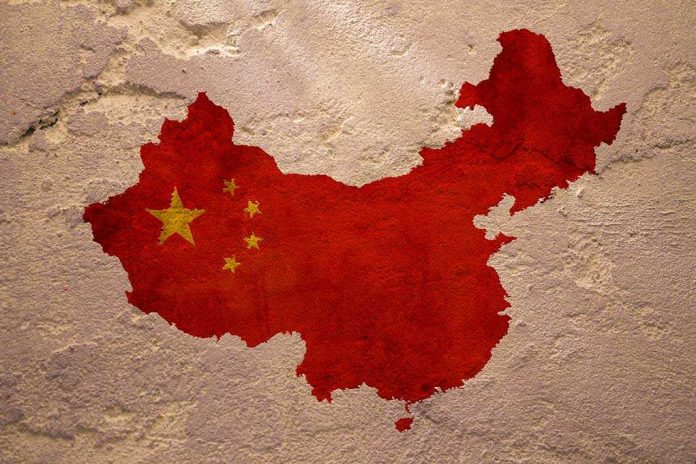
China’s full public unveiling of its nuclear triad at a massive 2025 parade signals a direct challenge to American strategic superiority and global security, raising urgent questions about U.S. nuclear deterrence and the future of the world order.
Story Highlights
- China showcased its complete nuclear triad—land, sea, and air-based nuclear forces—for the first time at its largest-ever military parade in Beijing.
- Top leaders from Russia and North Korea attended, highlighting deepening anti-Western alliances amid intensifying global rivalries.
- The parade featured new advanced missile systems, symbolizing China’s rapid military modernization and strategic ambitions.
- Experts warn this public display may trigger an escalated arms race and undermine U.S. and allied security interests in Asia and beyond.
China’s Nuclear Triad Parade: A Strategic Power Play
On September 3, 2025, Beijing’s Tiananmen Square became the stage for China’s first ever public display of its operational nuclear triad, bringing together land-based intercontinental ballistic missiles, submarine-launched ballistic missiles, and air-launched nuclear weapons in a show of force. This parade, marking the 80th anniversary of World War II’s end, was attended by Chinese President Xi Jinping along with Russian President Vladimir Putin and North Korean leader Kim Jong Un, underscoring deepening strategic partnerships aimed at contesting U.S. and Western influence in the region.
The event marked a historic departure from China’s decades-old policy of nuclear opacity and minimal deterrence, with the unveiling of new missile systems such as the road-mobile DF-31BJ and DF-61 ICBMs, the sea-based JuLang-3, and the air-launched JingLei-1. This modernization is the culmination of a two-decade effort to transform China’s arsenal from a limited, primarily land-based force into a robust triad capable of ensuring survivability and second-strike capability. The parade included displays of hypersonic missiles, underwater drones, and advanced strategic bombers, elevating China’s status as a peer nuclear competitor.
Geopolitical Messaging and Rising Tensions
Chinese state media framed the triad’s public display as an essential safeguard of national sovereignty and dignity, declaring the modernization effort a necessary response to perceived threats from the U.S. and its allies. The symbolic presence of Putin and Kim demonstrated a growing anti-Western axis, while the conspicuous absence of Western nations highlighted deepening global divides. Analysts interpret the parade as a deliberate signal to the United States, advertising China’s new technological prowess and readiness to defend its interests—especially as tensions rise over issues like Taiwan and the South China Sea.
This strategic messaging carries major implications for the balance of power in Asia. The United States and its allies must now reckon with an openly competitive and technologically advanced nuclear rival, complicating longstanding deterrence strategies and increasing the risk of miscalculation. The move is widely viewed as a challenge to the U.S.-led security architecture that has underpinned regional stability for decades.
Potential Consequences for U.S. Security and Global Stability
National security experts warn that China’s public triad display could spark a new arms race, prompting the United States, Japan, South Korea, and India to accelerate their own defense modernization programs. The introduction of survivable, road-mobile ICBMs and advanced SLBMs enhances China’s second-strike capability, undermining traditional American nuclear superiority and raising doubts about the credibility of U.S. extended deterrence. Economic impacts may follow as nations increase defense budgets, diverting resources from other priorities and fueling global instability.
Domestically, the parade served as a propaganda tool to reinforce the legitimacy of the Chinese Communist Party and Xi Jinping’s leadership, stoking national pride and unity. Internationally, the event has drawn concern from Western analysts and policymakers, who caution that public nuclear signaling increases the risk of escalation and undermines long-standing arms control frameworks. The lack of transparency regarding the true capabilities of these new systems adds further uncertainty to an already volatile strategic environment.
Expert Perspectives and Strategic Uncertainty
Industry analysts describe the triad display as a clear message of strategic confidence, with military experts highlighting the significant leap in China’s ability to survive a first strike and retaliate. Academic commentators note a decisive shift from China’s historical posture of minimal deterrence to one of robust nuclear signaling, aimed at deterring the U.S. and reshaping the global order. While Chinese sources claim the triad is defensive in nature, Western defense experts warn that such displays are likely to provoke regional arms buildups, increase the risk of miscalculation, and erode the credibility of existing deterrence relationships.
Sources:
China parade: Nuclear weapons, Xi, Putin, Kim, military – Breaking Defense
China’s show of force at military parade – Xinhua English
China’s military parade: robot dogs, weapons, missiles, Xi Jinping – The Independent














